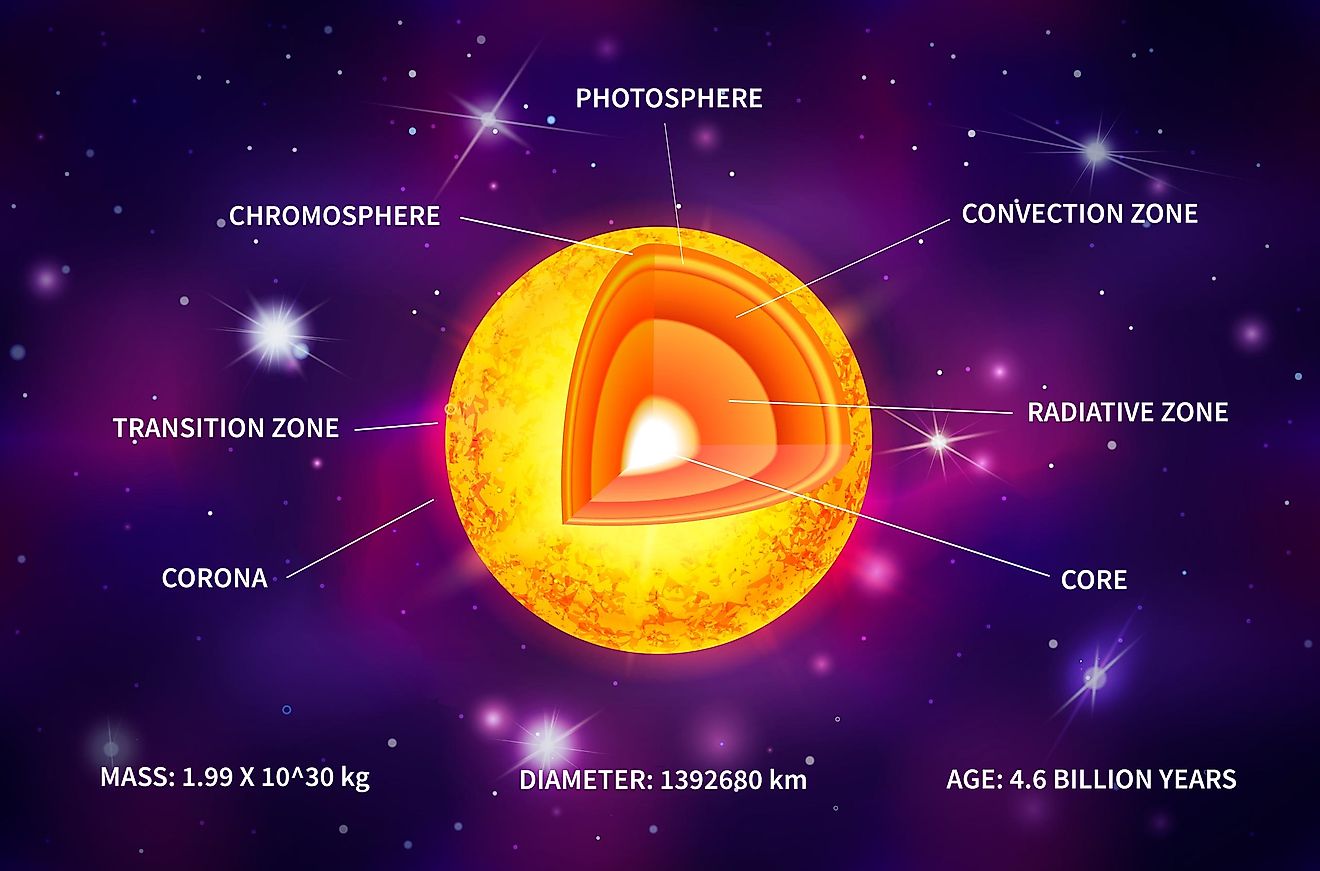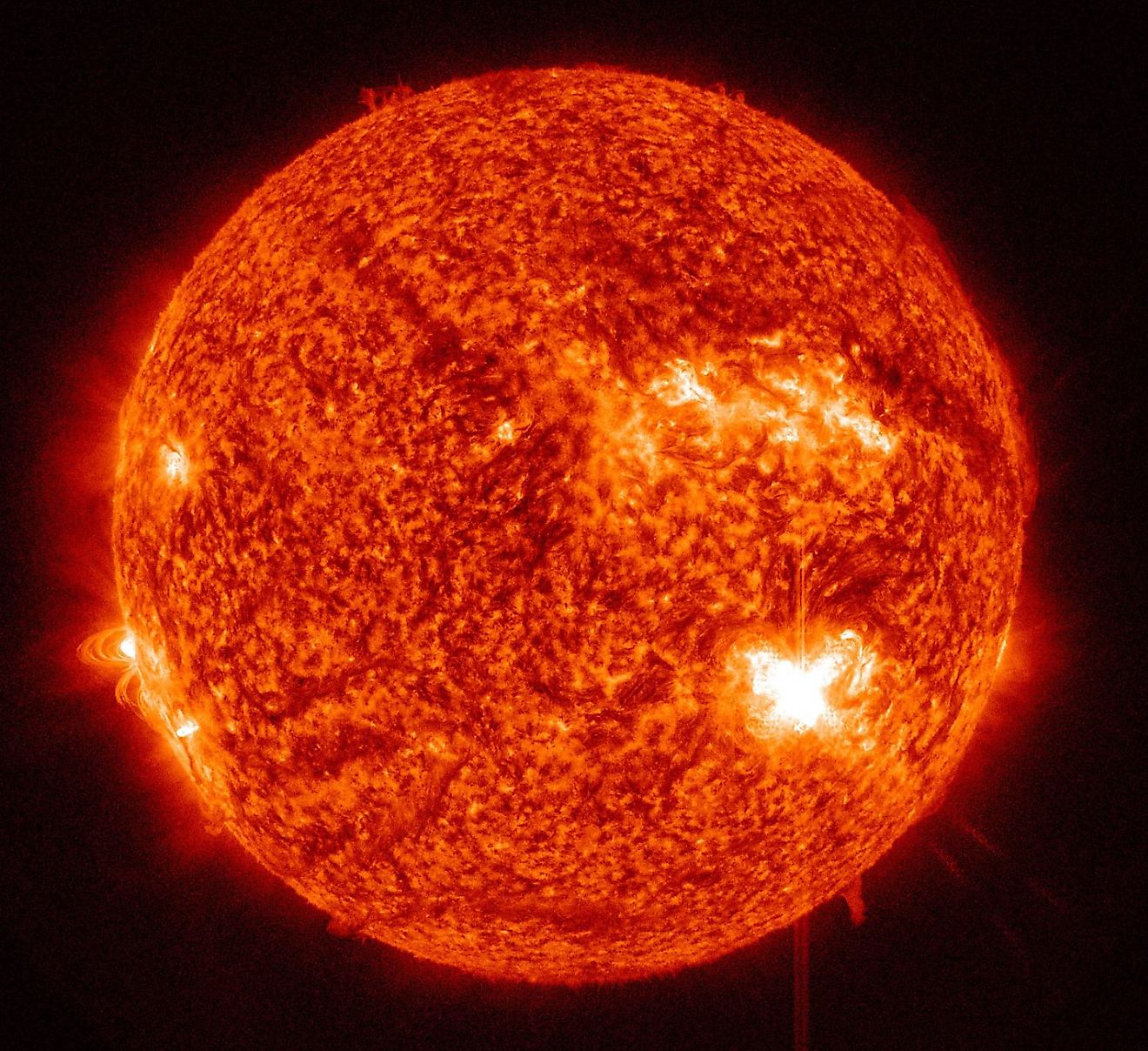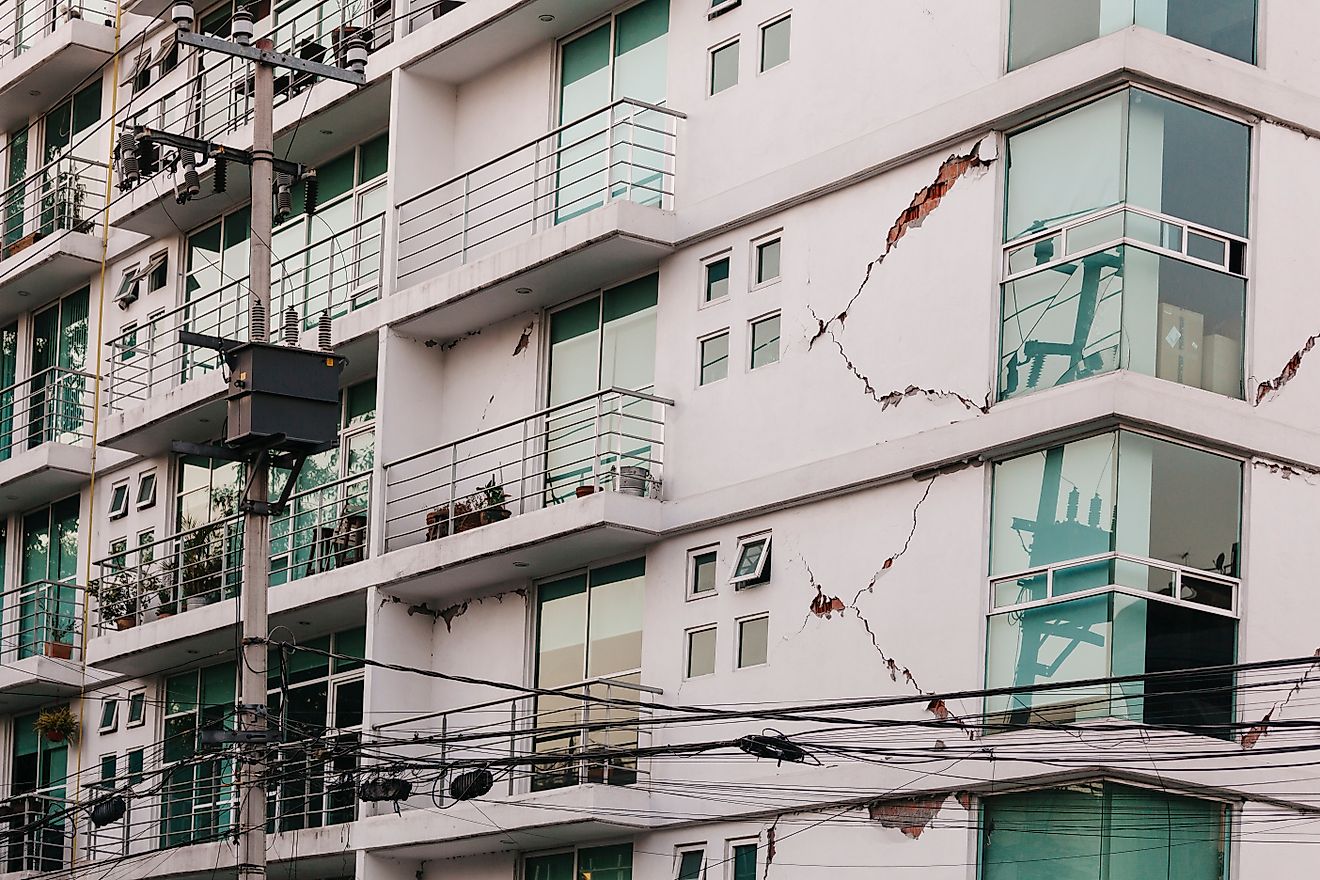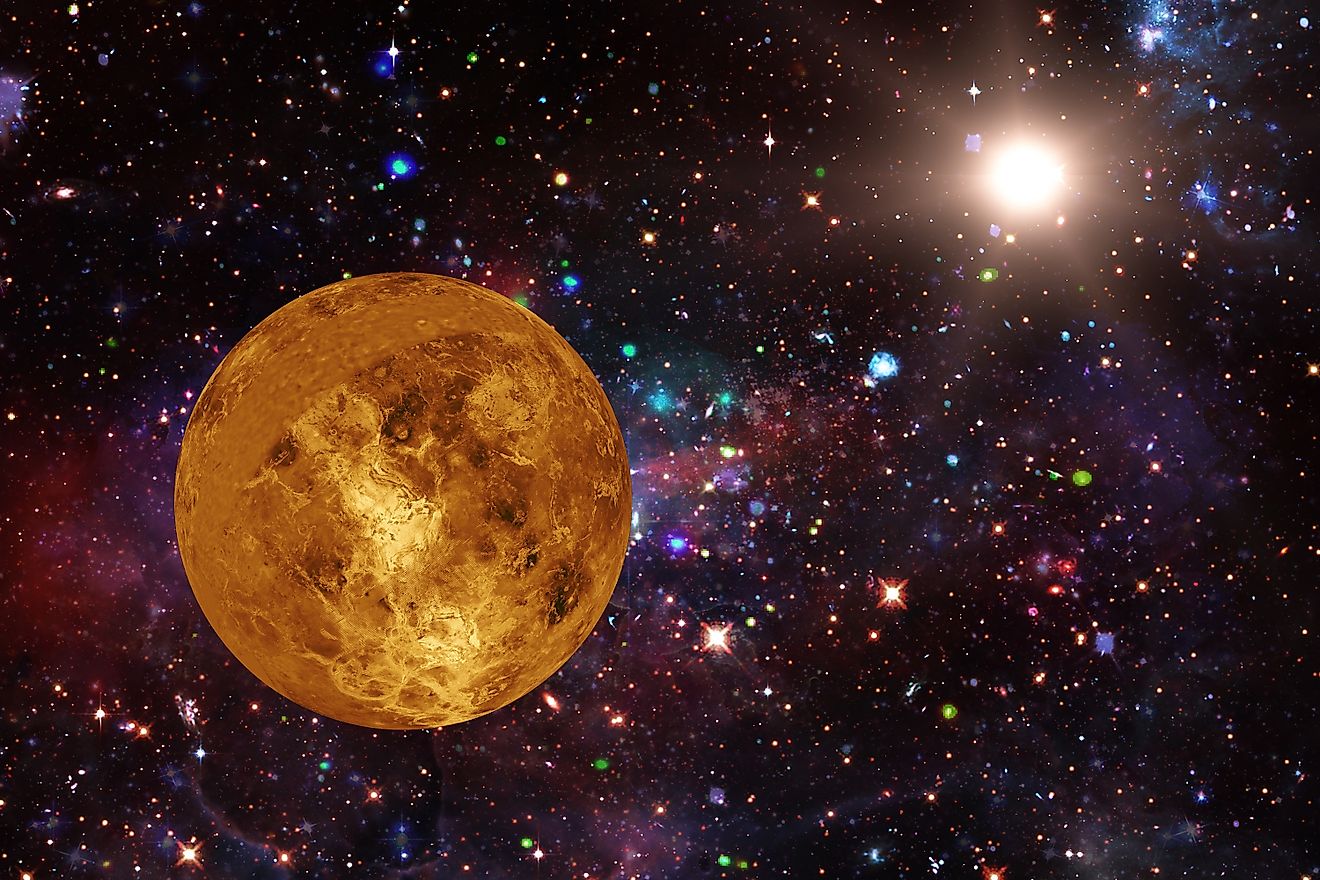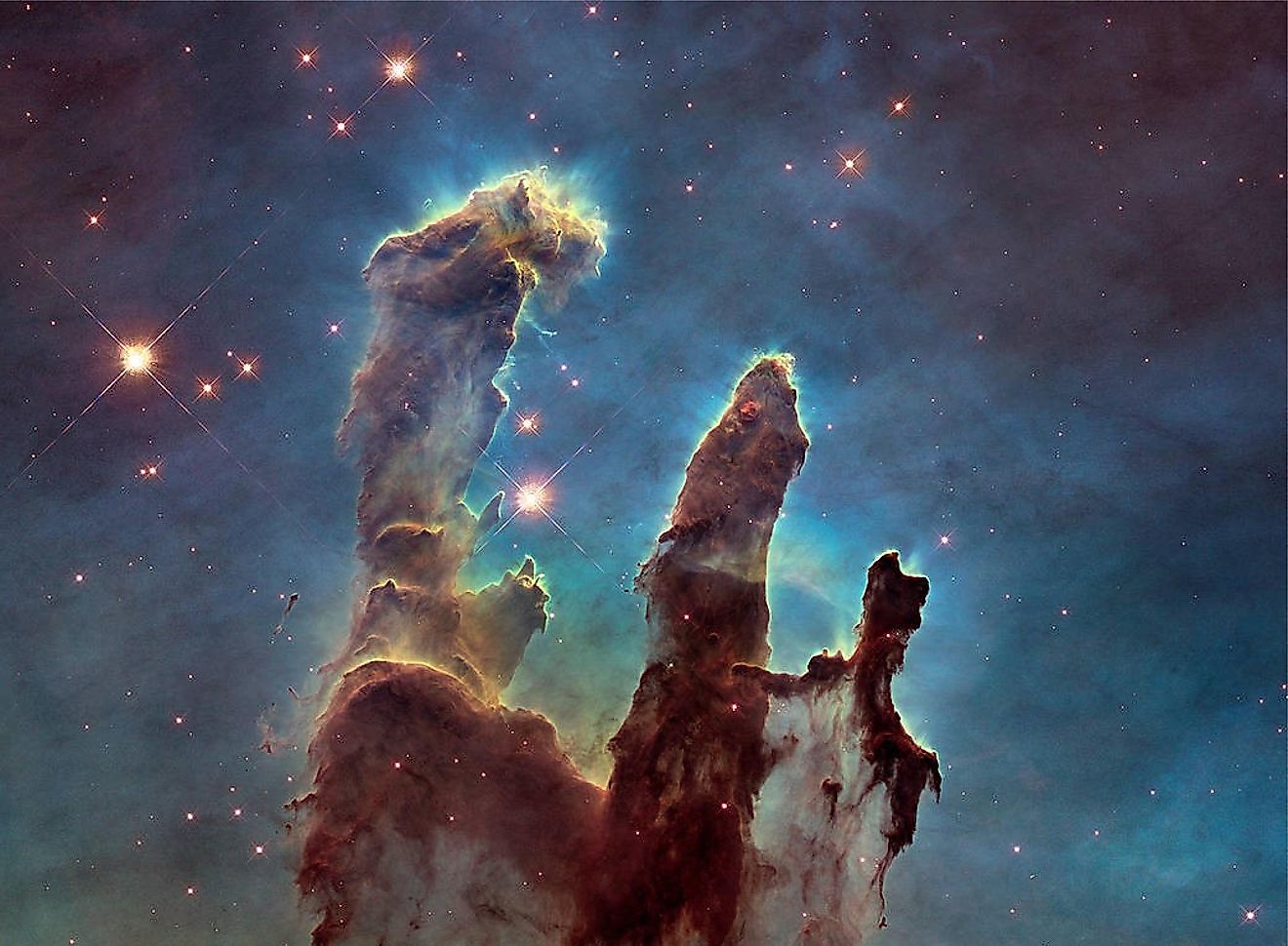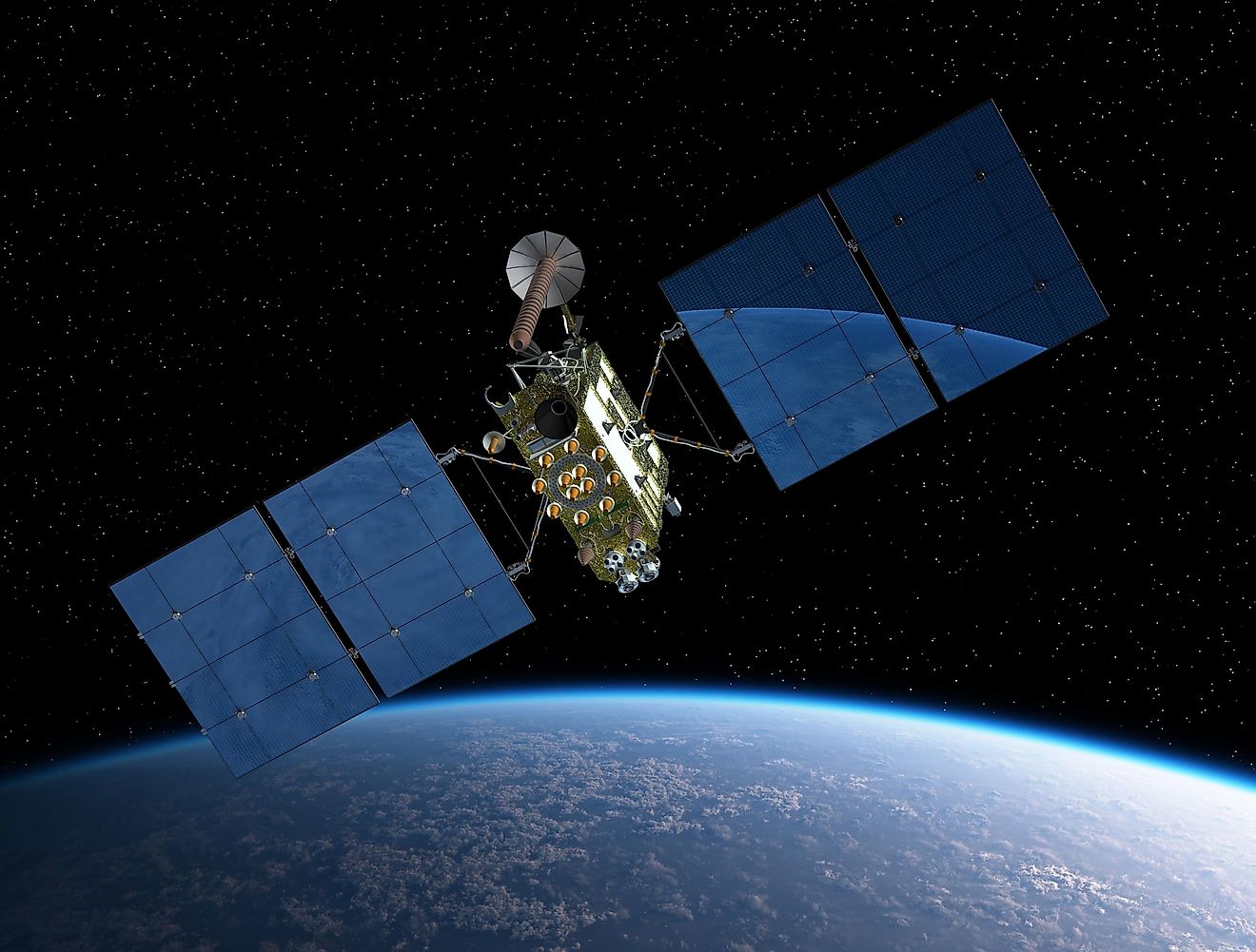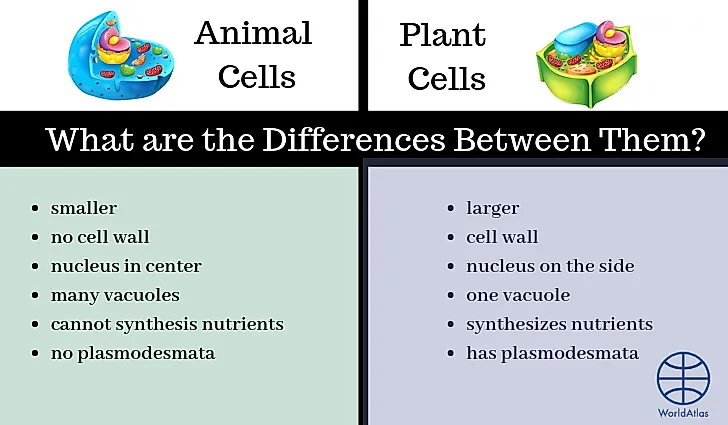
What are the Differences Between Plant Cells and Animal Cells?
In the late 1830s, botanist Matthias Schleiden and physiologist Theodor Schwann helped establish early cell theory by recognizing that both plants and animals are made of cells. Their work laid the foundation for modern biology, which now recognizes the cell as the basic unit of life.
Plant and animal cells share many structural features because both are eukaryotic, meaning they contain a nucleus and membrane-bound organelles. At the same time, each has key differences that reflect the distinct needs of plants and animals. The sections below outline the major similarities between plant and animal cells before turning to the features that set them apart.
Plant Cells
Plant cells typically range from 10 to 100 micrometers in size, making them generally larger than most animal cells. Many plant cells contain chloroplasts, the organelles responsible for photosynthesis. Chloroplasts hold chlorophyll, the pigment that gives many plant tissues their green color and allows plants to convert sunlight into chemical energy. Plant cells also have a rigid cell wall made of cellulose, which provides structural support, maintains cell shape, and protects the cell from external pressure. This cellulose-based wall is a defining feature of plant cells and is not found in animal cells. Many plant cells also contain a large central vacuole that helps regulate water balance and contributes to the cell’s structure.
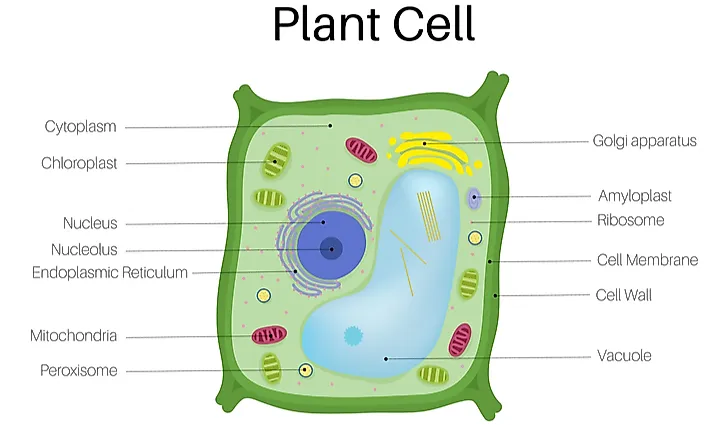
Cells contain specialized internal structures called organelles, each responsible for a specific function necessary for life. Many organelles are shared by both plant and animal cells, such as the nucleus, mitochondria, and endoplasmic reticulum. Plant cells, however, also contain organelles unique to their biology, including chloroplasts and a large central vacuole. Below are some of the key organelles found in plant cells and the roles they play.
Plasma Membrane
The plasma membrane is a selectively permeable barrier that surrounds the cell and regulates the movement of substances in and out. It maintains the internal environment of the cell and supports communication and transport processes such as diffusion and osmosis.
Cell Wall
Plant cells have a rigid cell wall made primarily of cellulose that surrounds the plasma membrane. The cell wall provides structural support, protects the cell, and helps maintain its shape. It is porous to water and small molecules, allowing materials to move freely between adjacent cells.
Chloroplasts and Plastids
Chloroplasts are organelles found only in plant cells and are responsible for photosynthesis, using sunlight to produce energy-rich molecules. They contain chlorophyll, the pigment that gives many plant tissues their green color. Chloroplasts belong to a broader group of plant organelles called plastids, which also include chromoplasts (pigment storage) and amyloplasts (starch storage).
Vacuole
Most plant cells contain a large central vacuole that stores water, ions, and dissolved substances. The vacuole helps maintain internal pressure, supports the cell’s structure, and contributes to growth by expanding as it fills with fluid. It also plays a role in waste storage and maintaining the chemical environment of the cell.
Cytoplasm
The cytoplasm is the fluid matrix that fills the interior of the cell. It contains enzymes, dissolved nutrients, and organelles, and serves as the site of many metabolic reactions essential for cell survival.
Animal Cells
Animal cell size ranges from 10-30 µm, which makes it obvious that plant cells can be much bigger, clearly, depending on the plant. The primary difference from plant cells is that animal cells don’t contain chloroplast nor structurally important cell walls.
It is obvious why animal cells lack in chloroplast, as there is no process of photosynthesis that generates food for the cells - animal cells create their energy via different process. But the interesting question is why exactly do they lack cell walls.
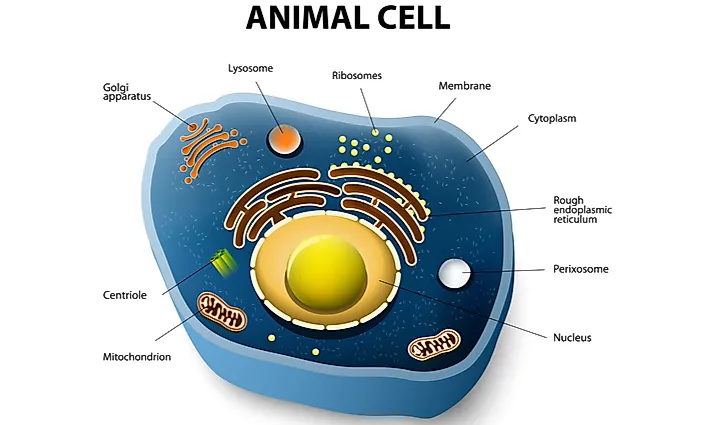
Animal cells typically range from 10 to 30 micrometers in size, making them smaller on average than most plant cells. Unlike plant cells, they do not contain chloroplasts or a cell wall. Instead, they are enclosed only by a flexible plasma membrane, which allows for a wide variety of shapes and supports the movement and interaction of animal tissues.
Animal cells generate energy through cellular respiration in the mitochondria rather than photosynthesis. The absence of chloroplasts reflects this difference in energy production. Animal cells also lack a rigid cell wall because animals require flexibility for movement, growth, and the formation of diverse tissue types. Structural support comes from an internal cytoskeleton and an external extracellular matrix rather than from cellulose-based walls. Many animal cells also contain organelles such as lysosomes and centrioles, which play key roles in digestion and cell division.
Plasma Membrane
As in plant cells, the plasma membrane in animal cells regulates the movement of molecules into and out of the cell. It also facilitates communication between cells and maintains internal structures by preserving a stable internal environment.
Mitochondria
Mitochondria generate the usable energy needed for cell function through cellular respiration, producing ATP from nutrients such as glucose. They are essential for powering nearly all processes within the cell and are often referred to as the cell’s “powerhouses.”
Cytokinesis
Cytokinesis is the final stage of cell division, during which the cytoplasm separates into two new cells. In animal cells, this occurs through the formation of a cleavage furrow, where a contractile ring of actin and myosin tightens around the cell membrane until the cell splits in two.
Centrioles
Centrioles are cylindrical structures located within the centrosome, the main microtubule-organizing center of the cell. They help form the mitotic spindle during cell division and play a key role in organizing microtubules that support cell structure and movement.
Cilia
Cilia are hair-like extensions of the cell membrane supported by an internal arrangement of microtubules. They assist in cell movement or, in many tissues, help move fluids or particles across the surface of the cell.
Main Differences Between Plant and Animal Cells
Plant and animal cells share many features because both are eukaryotic, meaning they contain a nucleus and membrane-bound organelles. However, each type has structural and functional differences that reflect the distinct needs of plants and animals.
Organelles Unique to Each Cell Type
Plant cells contain chloroplasts, a cell wall made of cellulose, and a large central vacuole—features not found in animal cells. Chloroplasts enable photosynthesis, while the cell wall provides rigidity and shape. The central vacuole helps maintain internal pressure and stores water and other substances.
Animal cells contain certain organelles that plants typically lack, including centrioles, lysosomes, cilia, and desmosomes. These structures support cell division, intracellular digestion, movement, and cell-to-cell adhesion.
Size and Shape
Plant cells are usually larger, often ranging from 10 to 100 micrometers, and have a more rigid, rectangular shape because of the cell wall. Animal cells are generally smaller, more variable in shape, and flexible due to the absence of a rigid outer wall.
Cell Wall vs. Plasma Membrane
Plant cells have both a cell wall and a plasma membrane, while animal cells have only a plasma membrane. The cell wall provides structural support, whereas the plasma membrane in both cell types regulates the movement of materials in and out of the cell.
Nucleus Position
Both plant and animal cells have a nucleus. In plant cells, the nucleus is often pushed toward the cell’s perimeter by the large central vacuole. In animal cells, the nucleus is usually located near the center, although its exact position depends on the cell type.
Vacuoles
Animal cells contain several small vacuoles used for storage and transport. Plant cells typically contain one large central vacuole that occupies much of the cell’s volume and plays a major role in maintaining structure and water balance.
Energy Acquisition and Nutrient Synthesis
Plant cells produce energy through photosynthesis in the chloroplasts and can synthesize sugars and other organic compounds. Animal cells rely on cellular respiration in the mitochondria and must obtain energy and nutrients from their environment.
Cell-to-Cell Communication
Plant cells communicate through plasmodesmata, small channels that pass through the cell wall and allow molecules to move from one cell to another. Animal cells lack plasmodesmata and instead use structures such as gap junctions for intercellular communication.
